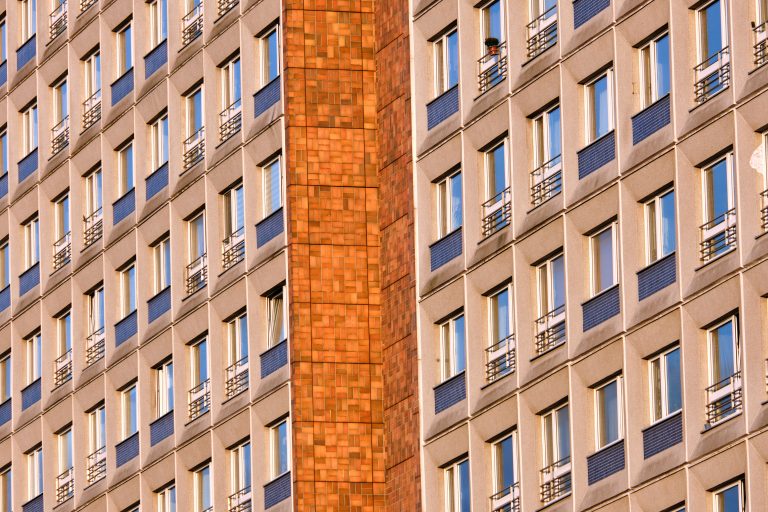Precast concrete is a staple in modern construction, favored for its efficiency and the uniform quality it delivers. This method involves casting concrete in a reusable mold which is cured in a controlled environment and transported to construction sites.
Despite its popularity, precast concrete presents several weaknesses in modern architectural applications. Glass Fiber Reinforced Concrete (GFRC) emerges as a material that can address some of these limitations effectively.
Aesthetic Limitations
Precast concrete components are often criticized for their uniform appearance, which can impede creativity in architectural design. The repetitive nature of the elements can lead to a monolithic and uninspiring aesthetic. In contrast, GFRC offers greater flexibility in design with the ability to mold into intricate shapes and textures, enhancing architectural expression and individuality.
Weight and Structural Limitations
The substantial weight of precast concrete requires significant structural support systems, which can complicate the design and construction of lighter, more delicate building frameworks.
GFRC is significantly lighter than traditional precast concrete, reducing the need for extensive structural support and allowing for more adventurous architectural designs without compromising on strength.
Installation Challenges
The heavy weight of precast concrete also impacts its transportation and installation – and ultimately, costs. It requires specialized equipment and handling, which can increase the logistical costs and complexity of construction projects. It also is more likely to become damaged during transport, something that can add additional costs to the project.
GFRC’s lighter weight simplifies these processes, reducing both the environmental impact and the cost associated with transportation and installation.
Durability Concerns
Precast concrete is vulnerable to cracking over time due to environmental stresses such as freeze-thaw cycles and thermal expansion.
GFRC, reinforced with glass fibers, provides enhanced durability and resistance to weathering. Its higher tensile strength helps prevent cracking, and its ability to withstand severe weather conditions makes it a preferable choice for exterior applications.
Budget Considerations
While precast concrete can be cost-effective for large-scale projects due to its repeatability, the initial costs for smaller or custom projects can be high due to the need for unique molds and setups. GFRC, although initially more expensive, offers cost savings in the long run through reduced maintenance, longer lifespan, and lower transportation and installation costs.
Environmental Impact
The production of precast concrete is energy-intensive and has a significant carbon footprint. GFRC, by contrast, is considered more environmentally friendly due to its reduced weight leading to lower emissions during transport and its ability to use a higher proportion of recycled materials in its mix.
Choosing GFRC Over Precast Concrete
While precast concrete remains a valuable material in the construction industry, its applications in modern architecture are sometimes limited by aesthetic rigidity, weight, installation challenges, and sustainability concerns.
GFRC presents a compelling alternative, offering enhancements in design flexibility, environmental impact, and overall durability. Architects and builders looking to overcome the limitations of traditional precast concrete might find GFRC to be an advantageous solution, aligning more closely with the demands of contemporary architectural design and sustainable construction practices.


